I am very new to spatial evaluation and come from psychology.
I am using the software R and the packages "gstat" and "spacetime".
I would like to do a spatio temporal interpolation. For this I follow the paper of Gräler et al. (https://cran.r-project.org/web/packages/gstat/vignettes/spatio-temporal-kriging.pdf)
Unfortunately I can't find/fit the right variogram model. I can create the empirical variogram and this is also conclusive to me, but then I do not get any further. I do not understand how to define the individual parameters such as "sill" or "nugget" or what they stand for.
Here are my previous approaches:
My ST-Dataframe:
> df.stf
An object of class "STFDF"
Slot "data":
# A tibble: 2,406 x 6
KRS month DeprIndex MMW10 MMW25 NewInfect
<dbl> <int> <dbl> <dbl> <dbl> <dbl>
1 1001 1 -4.08 NA NA NA
2 1002 1 -2.28 13.3 NA NA
3 1003 1 -3.29 17.8 11.7 NA
4 1004 1 -4.31 NA NA NA
5 1051 1 -2.51 17.7 NA NA
6 1053 1 -1.07 13.0 9.93 NA
7 1054 1 -0.863 NA NA NA
8 1055 1 -1.63 NA NA NA
9 1056 1 0.887 NA NA NA
10 1057 1 -1.21 14.7 8.84 NA
# ... with 2,396 more rows
Slot "sp":
class : SpatialPolygonsDataFrame
features : 401
extent : 3280359, 3921536, 5237511, 6103443 (xmin, xmax, ymin, ymax)
crs : +proj=tmerc +lat_0=0 +lon_0=9 +k=1 +x_0=3500000 +y_0=0 +ellps=bessel +towgs84=598.1,73.7,418.2,0.202,0.045,-2.455,6.7 +units=m +no_defs
variables : 1
names : AGS
min values : 1001
max values : 16077
Slot "time":
timeIndex
0001-01-30 1
0002-01-30 2
0003-01-30 3
0004-01-30 4
0005-01-30 5
0006-01-30 6
Slot "endTime":
[1] "0002-01-30 CET" "0003-01-30 CET" "0004-01-30 CET" "0005-01-30 CET" "0006-01-30 CET" "0007-01-30 CET"
So, I have 401 german counties and the mean monthly PM10 value over six month.
My empirical variogram:
eVgmPm10<-variogramST(MMW10~1,df.stf,tlags = 0:5)
eVgmPm10$dist<-eVgmPm10$dist/1000
eVgmPm10$avgDist <- eVgmPm10$avgDist/1000
eVgmPm10$spacelag <- eVgmPm10$spacelag/1000
plot(eVgmPm10, map=F)
So far everything works as it should (I guess)
Now I wanted to make as in the paper explained a seperable model:
separableModel <- vgmST("separable",
space = vgm(0.9, "Exp", 200, 0.1),
time = vgm(0.9, "Sph", 3.5, 0.1),
sill = 124)
I understand, that I have to create a variogram for space and time. But I do not know how to define the parameters correctly (psill, model, range, nugget) for the variograms. If I use the same parameters as in the paper I get folowing plot:
As you can see, in this model, I just have two lags and the variogram looks realy strange. So, I think it is because of the wrong parameter for my model. I also tested another approach like in the paper.
sumMetricModel <- vgmST("sumMetric",
space = vgm(20, "Sph", 150, 1),
time = vgm(10, "Exp", 2, 0.5),
joint = vgm(80, "Sph", 1500, 2.5),
stAni = 120)
Again, I do not have any idea and clue how to set the parameters so I took the same as in the paper and plot all three.
I am pretty sure it depend on the parameters but I do really not know how to find the correct variogram model to fit.
UPDATE AFTER FIRST ANSWER:
As suggested I used fewer timelage for the new empirical variogram:
eVgmPm10<-variogramST(MMW10~1,df.stf,tlags = 0:2)
As you can see I got stil 3 time steps starting with "lag 0".
Than I tried to fill the model parameters as suggested.
separableModel<-vgmST("separable",
space=vgm(psill = 15,model = "Exp", range =250 ,nugget = 5),
time = vgm(psill = 15,model = "Exp", range =1 ,nugget = 0),
sill = 15)
Here is the wireframe of both:
I really frustrated and I am really sorry for my lack of knowledge, but I really try hard to understand it and I am thankfull for every help





